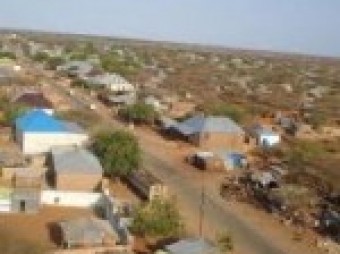Evacuations begin in Bardhere in fear of imminent floods from River Jubba

Hundreds of residents of Bardhere district are evacuating in fear of imminent floods from River Jubba.
This has triggered panic among locals living near the river, more so with the El Niño rains expected soon.
People have also started moving away from around small canals in tribal areas of the district, as the water level in the river rises.
Residents fear that if floods of the same intensity recur, the destruction will be greater and affect areas as well since the buffer areas in between have already been washed away several.
Much higher than normal rains in the last third of 2015, resulting from the El Niño climate phenomenon, could reverse many of the humanitarian and development gains made in southern parts of Somalia since the Horn of Africa Nation was affected by one of the worst famines in 2011, experts have warned.
El Niño, a warming of sea-surface temperature in the Pacific Ocean, occurs every few years and is associated with very heavy rainfall in East Africa and drought-like conditions in other parts of the region.
The scale of impact varies, but experts from the UN’s Food and Agriculture Organization warn that this year’s El Niño could match the intensity of recent severe El Niño weather evants, including the 1997-98 weather patterns which left large parts of southern Somalia underwater and killed 2,000 people.
“While some countries experience depressed rains during El Niño events, Somalia experiences heavier rainfall amounts that usually lead to flooding that may cause diseases, death and destruction of property and infrastructure.If El Niño conditions materialize an estimated population of 900,000 people living in the riverine areas of the Juba and Shabelle rivers inside Somalia are likely to be affected by the floods,” said Hussein Gadain, the Chief Technical Advisor of FAO Water and Land Information Management unit (SWALIM).
Following 2011 famine that killed an estimated 260,000 people, Somalia has seen steady improvement of its food security situation. However, over 731,000 people are still estimated to be severely food insecure, requiring urgent humanitarian assistance and livelihood support, according to FAO’s Food Security and Nutrition Analysis Unit for Somalia (FSNAU).
Another 2.3 million people are classified as Stressed (IPC Phase 2) and require interventions to protect their livelihoods and build their resilience to prevent them from falling back into Crisis or Emergency conditions.
Many children remain acutely malnourished, despite a small decrease in their numbers since July 2014. In particular IDPs continue to be very hard hit with little prospect for improvement.
“Against this backdrop of fragility and very low household resilience levels, we fear Somalia could be very hard hit by massive flooding and the burden it bares on Somali communities still recovering from impact of drought, conflict and disease,” said Daniel Molla, the chief technical advisor of FSNAU.
The El Niño in 1997-8 was the worst in recent memory. It caused massive flooding along the Jubba and Shabelle rivers in Somalia, led to major animal disease outbreaks, which contributed to a long-lasting export ban in 1999 resulting from rift valley fever, an animal disease that is particularly prone to flooding and prolonged wet conditions. With over 65 percent of the Somali population depending on livestock, the sector is likely to be very badly hit. food production, mostly along Jubba and Shabelle rivers, is also likely to be dramatically affected, at least in the short-term. Other El Niño events, such as in 2005-06 were less severe, but still caused significant damage and displacement.
FAO and others are calling for urgent early action to prepare Somalia’s riverine populations to cope with the flooding and enable fast recovery. Somalia has suffered on-and-off civil war for the last two decades waning its population’s ability to cope with natural disasters.